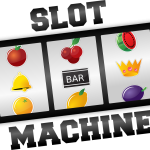
Almost everyone possesses a smart card of some kind or other; either a bank card, a loyalty card or a workplace ID card. However, not all smart cards are the same. The type of microchip they have embedded and the way a card’s data is written and read means there are significant differences between the various types of card and the kinds of things they can be used for. In this article, we’ll explain the different types of smart card currently available.
- Contact smart cards
Contact smart cards are those which have to be inserted into a reader before data can be read or written. By far the most common type of smart card, we use these predominantly in cash machines and at payment terminals, though they have countless other uses.
Contact card microchips come with various levels of memory and processing power and, just like computers, the more memory and power you need, the greater the cost. Using the card to carry out a single function helps keep pricing affordable, though the demands of the application running on the card will be the decisive factor.
- Memory smart cards
Memory cards are used to store information and unlike contact cards, their chips do not actually process any data. In many instances, the chips store a unique ID associated with a specified user and this is linked to the user’s account on an IT system. Any processing of data is done on the system itself.
There are three different types of memory card: straight, protected and stored value. A straight memory card is simply a data storage device. As these cards lack the functionality to identify themselves to a reader, the company’s IT system needs to have the ability to identify this type of card when it is used. From a security point of view, these cards can pose a risk as they are easily duplicated, so they should not be used for purposes that require high security.
A more secure option is the protected memory card, which uses a password or key to control access to the card’s memory and thus prevents unauthorised reading and writing of data. Some of these cards can have their memory split into different partitions, enabling them to carry out more than one function. This increases their versatility, cuts down the need for users to carry multiple cards and thus cuts costs. Unlike straight memory cards, protected cards are difficult to duplicate.
A stored value card is used for storing disposable values, such as a gift card which can be used until the amount of money stored on it gets used up. Some, like the gift card, can be disposed of, others, like travel cards, can be topped up. For security purposes, these cards have a password or other protection built-in to the chip.
- Microprocessor smart cards
Microprocessor cards are like mini computers that have an operating system and data processing functionality. Some are able to undertake more than one function and do this by managing data in an organised file structure and providing each application with enough memory and processing capacity to operate. The multi-functionality enables businesses to use one card for a wide range of purposes, such as payment transactions, access control and logical access.
- Contactless smart cards
Using radio wave technology such as NFC and RFID, contactless cards can operate without the need to be inserted into a reader as they can communicate with them over a distance (in the case of RFID) or by tapping (as with NFC). This makes them ideal cards for access control and contactless payment systems.
- Hybrid and dual interface smart cards
Sometimes it is advantageous to use specialised forms of smart card like the hybrid and dual interface cards. Hybrids contain more than one microchip, each of which can be used to carry out different functions, however, keeping each function on a separate chip make security more robust. Dual interface cards are often bank cards with a chip that enables it to be used for both contact and contactless transactions.
Summing up
Smart cards, such as those available from Universal Smart Cards, come in a range of different types. They include contact, contactless and dual interface cards; those with memory only chips and those with their own operating system and mini-programs. There are those which are designed to carry out a single function and those which can carry out multiple operations. So, while companies which want to use them are spoiled for choice, it is always best to choose the most appropriate type of smart card for your needs. Hopefully, the information here will help readers make a more informed decision.












